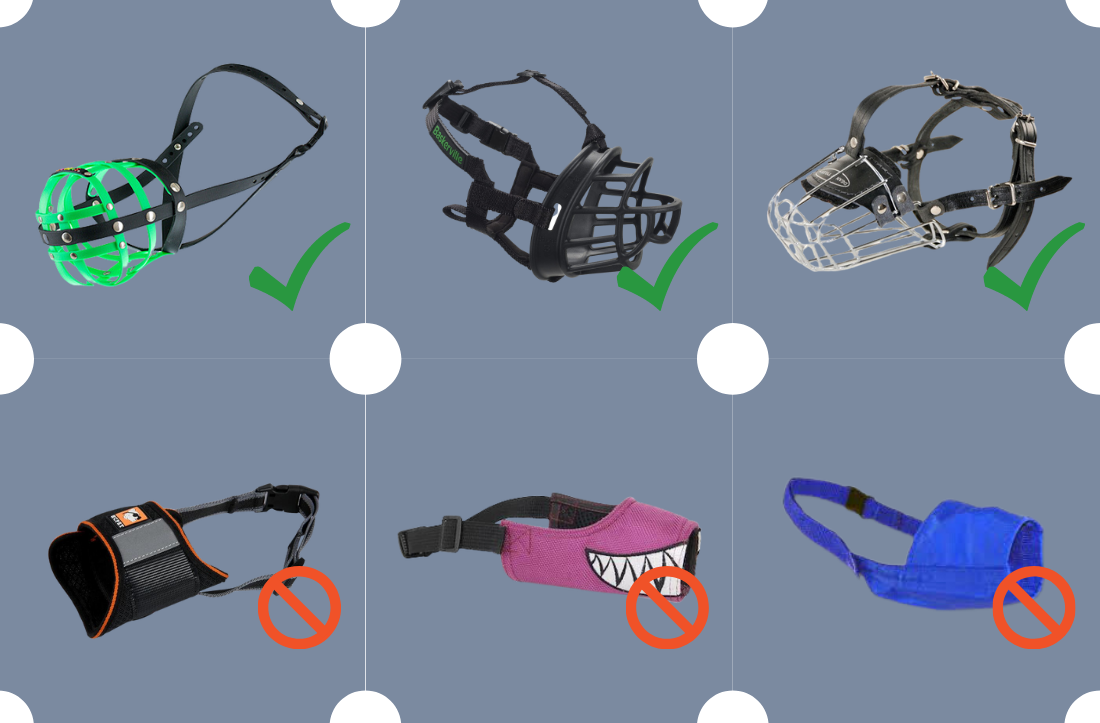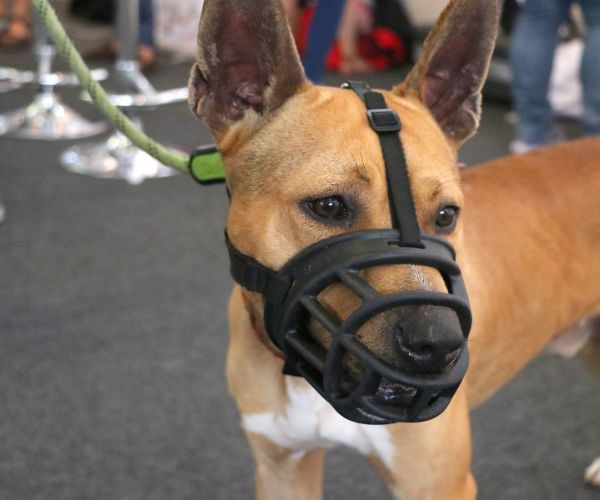Muzzle training is a great tool for every dog to learn. It’s not just for aggressive or reactive dogs. There are many misconceptions surrounding muzzles. Let’s bust these myths and talk about the truth about muzzles and muzzle training.
Muzzles are for bad dogs
- WRONG! Muzzles are used as a management and preventive measure. This isn’t just preventing biting, it’s preventing them eating things in the house or yard (rocks, feces), preventing them chewing off their bandage, and many other reasons. Some countries and venues even require all dogs to be muzzled as well.
Muzzles mean the dog has bitten someone
- Nope, not at all. There are many reasons a dog can be wearing a muzzle. Dog’s who are nervous but never bit anyone could also be wearing one so the owners feel better. They are also used for dogs in pain at the vet.
Muzzles are cruel
- Media has poisoned our view on these tools. They are not evil. While they can be used in a cruel way, so can leashes, harnesses, collars and all other equipment out there. As long as you are using them properly then they are an awesome tool.
Below we talk about how to choose a muzzle and what to look for when buying one. We also outline how to muzzle train your dog and some troubleshooting questions.
Types of Muzzles
- Basket design – this means they can pant, drink water and eat treats with it
- Large enough to fit their whole mouth but not too loose
- Ability to be cleaned thoroughly
- Comfortable for the dog
Basket Muzzles are the best choice in muzzle due to them being able to drink water, pant and take treats. Some do not allow them to take treats. So, be mindful if you plan to offer rewards while your dog is muzzled.
Cloth muzzles are not recommended due to the dogs mouth being shut. This can cause more stress. They are unable to pant which can cause them to overheat. A properly fitted one does not allow you to give food rewards.

Training Steps
Step 1
Show them the muzzle and when they sniff or look at it, mark and reward. Repeat a couple times until they are happy to see the muzzle. Muzzle = good things
Step 2
Now that their happy to see the muzzle. We will now ask them to touch the muzzle to get a treat. You may point to encourage them to touch the muzzle.
Step 3
Now we will feed a treat through the muzzle for your dog to get it. You can also spray easy cheese or peanut butter on the muzzle for them to lick. Do not clip the muzzle on their head yet, that will come later
Step 4
Present the muzzle to your dog and reward them putting their face in the muzzle. Some dogs you will need to point or hold a treat at the tip of the muzzle.
Step 5
Once they are okay with voluntarily putting their face into the muzzle, we will start asking for duration. Wait a couple seconds before rewarding them. Start with two seconds and slowly build up that duration.
Step 6
Once they are okay with some duration. It doesn’t need to be a lot. Maybe 10-20 seconds. Then you will introduce clipping the muzzle. This is where most dogs tend to freak out. You will give a treat, clip the muzzle, then immediately unclip the muzzle and reward. Continue this step until they don’t mind the muzzle being clipped shut.
Tip: Some dogs you may need to have the muzzle super loose. They may feel trapped with a tight muzzle.
Step 7
Now we are building the duration for the muzzle being clipped. This is also when we will start tightening the muzzle and getting the correct fit.
You can have cheese, wet food, peanut butter or baby food spread in the muzzle if you like.
Clip the muzzle and have them wear it while doing something they love. This can be a walk, belly rubs, cuddling or have them follow you while giving treats. Slowly build the duration like the previous steps. Remember the goal is for them to love the muzzle or at minimum to tolerate it.
We do not want them to struggle or hate it. If you struggling with muzzle training please reach out to our behavior team. We can assist in troubleshooting and coming up with an alternative plan for your dog.

